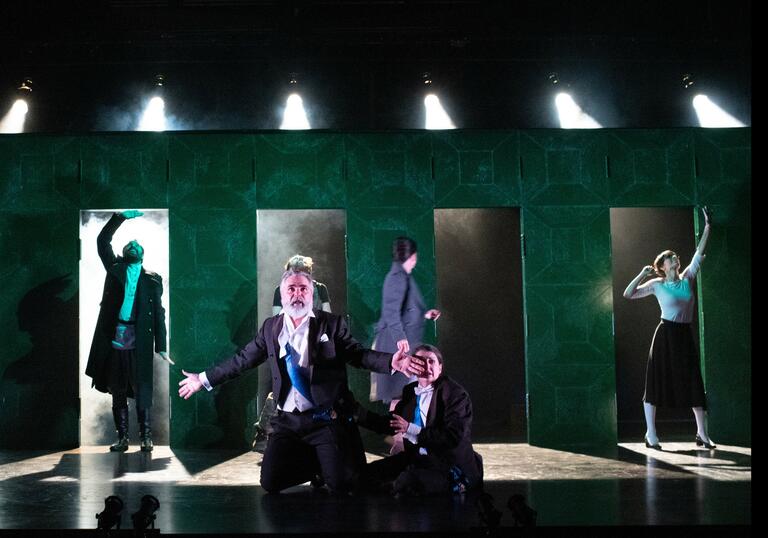Barbican Theatre, London – until 16 April 2023
Reviewed by Antonia Hebbert
4****
King Basilio has heard a prophecy that his infant son Segismundo will grow up to be a monster and tear the kingdom apart. So to prevent that, he locks the boy up in a lonely tower. When Segismundo is released years later, he has no idea how to behave, and kills someone on a whim. The king hastily locks him up again, but Segismundo is freed by rebels and leads a revolution. Thus the king has brought about the very things he wanted to prevent. But Segismundo has learnt wisdom through his ups and downs, and brings about a fair result for all. The message is that you can’t change destiny, but you can learn to handle your fate wisely.
That’s the bare bones of the story, and it’s not why this is considered one of the world’s greatest works of literature. The power of the play lies in the way it constantly throws big questions at you. What is consciousness? What is reality? Is each of us living in our own version of it? Is a dream a dream of dream? What is a good ruler? La Vida Es Sueño is the work of Pedro Calderón de la Barca, a playwright, soldier, priest and courtier in 17th century Spain. You could say that in this work he brings all his interests together. I’m embarrassed to confess I knew nothing about him, but he is evidently the Spanish equivalent of Shakespeare and the themes feel familiar from Shakespeare plays – the confusion of dreams and reality, use and abuse of power, concealed identities, fate. In a subplot, there’s a girl disguised as a boy, on a quest to find her faithless lover, and at one point the king calls out for a horse. The play is performed in Spanish. There are English surtitles, but non-Spanish speakers must be missing out on a lot of text, and also its poetry.
The focus is on the dreams and consciousness, inner-life themes of the play, rather than plot and subplot, which perhaps came across as extra clunky as a result. There is no scenery – the set is a row of doors, through which characters appear, sometimes in a random way as if in a dream. In the battle scene the doors are all thrown open to show smoky chaos. Sometimes the light is turned on the audience, so that we too are drawn into the question of what’s real or not.
That might sound very abstract, but it is full of life and action, with terrific, vigorous performances. Everyone is sharp and watchable. Alfredo Noval is a compelling Sigismundo, moving from desperate ‘monster’ in chains to soldier and statesman. Ernesto Arias is appealingly bumbling as the king, thinking he can control things but actually a helpless onlooker (is this all happening in his head?). Rebeca Matellán makes a bright, funny Rosaura (the girl-disguised-as-boy), who uses her implausible plotline to comic effect. She is accompanied by a wise-fool character, played by Goizalde Núñez, who reminded me of Victoria Wood and was somehow hilarious even if you couldn’t get all the jokes. The most touching moment in the play is when she too tries, and fails, to foil fate.
This is a joint production by Cheek by Jowl (artistic directors Declan Donnellan and Nick Ormerod) and Compañía Nacional de Teatro Clásico in Madrid (artistic director Lluís Homar).

